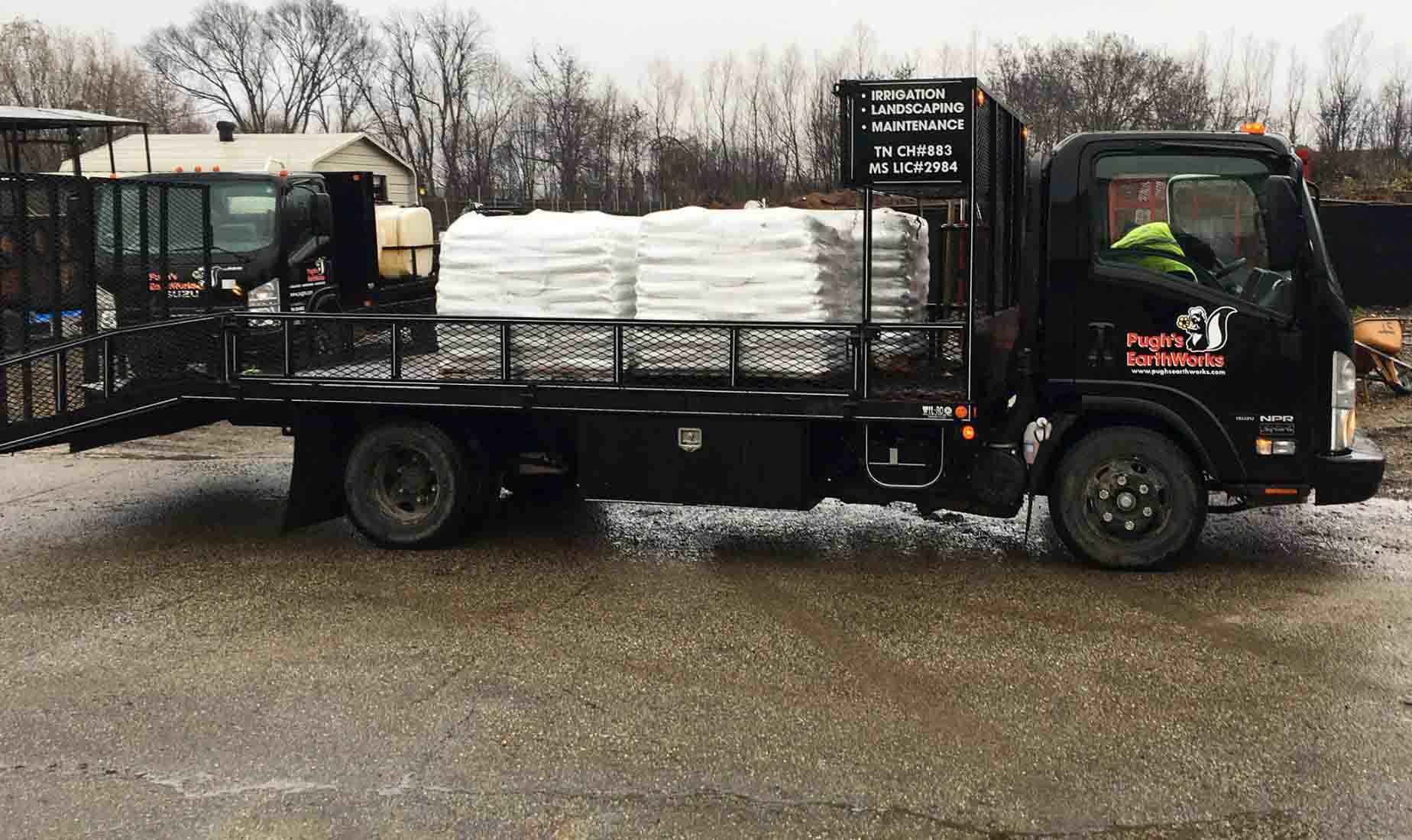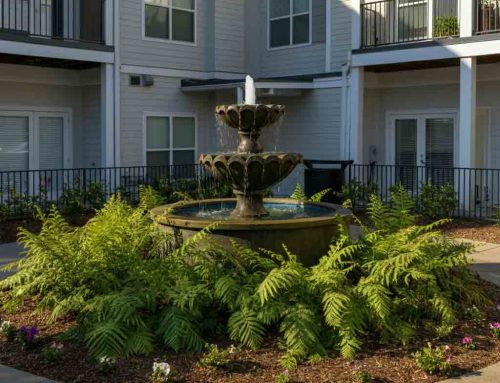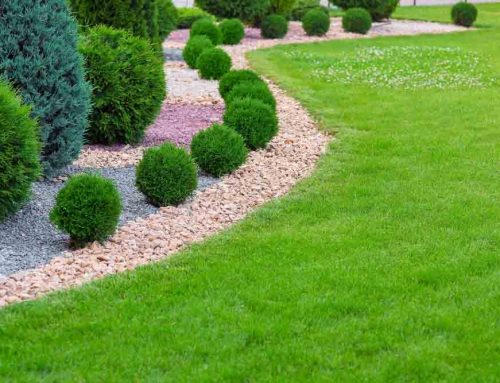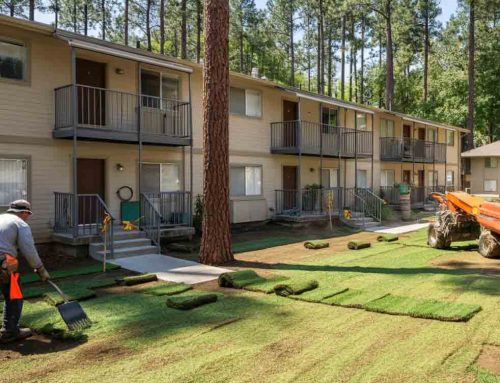Pugh’s Earthworks
Late summer provides the perfect opportunity to set the stage for a thriving fall landscape. With days gradually cooling and the bustle of peak summer subsiding, it is the ideal time for commercial landscapers, property managers, and business owners to get proactive. Anticipating the needs of your landscape now for Fall Commercial Landscape Transition can prevent headaches later and ensure a seamless transition into the vibrant hues of autumn. Pugh’s Earthworks is the premier Mid-South Commercial Landscaping to contact for all your landscaping needs.
In this guide, we will walk you through essential late summer commercial landscape steps to guarantee your property looks its best as fall arrives. We will cover everything from essential lawn care practices to strategic planting and maintenance tips.
The Importance of Early Preparation for Fall
Preparing your landscape in late summer is crucial for a robust and colorful fall display. It is during this window that you lay the groundwork for healthy plant growth and prevent potential issues caused by the changing season. Proactivity here means fewer surprises as temperatures drop and foliage begins to turn. Late summer preparation helps prevent diseases and pest infestations that thrive in cooler weather. By addressing these challenges ahead of time, you are ensuring your plants have the strength to withstand the stress of seasonal changes. Additionally, this period allows you to evaluate the overall health of your landscape, making it easier to implement necessary adjustments. For property managers and business owners, maintaining an immaculate landscape is not just about aesthetics; it is a reflection of your brand and can significantly impact client perceptions. Investing in late summer preparations ensure your property will continue to make a positive impression as the seasons shift.
Assessing Your Current Landscape
Before you begin any late summer landscaping activities, it is essential to thoroughly assess your current landscape. This step provides a clear understanding of what needs attention and helps you prioritize tasks effectively. Start by inspecting your turf, trees, shrubs, and flower beds for signs of stress, disease, or pest issues. Turf health is particularly important during this assessment phase. Look for patches of brown grass, which may indicate drought stress or pest problems. Also, take note of any excessive thatch build-up that could be suffocating your lawn. Addressing these issues promptly will support robust grass growth well into the fall. Another vital aspect of your assessment should involve examining irrigation systems. Check for leaks, clogs, or areas of poor coverage. Ensuring your system is working efficiently will save water and reduce costs while keeping your landscape adequately hydrated.
Essential Lawn Care Practices
Lawn care is a critical component of your late summer commercial landscape steps. Proper mowing, watering, and fertilization can make all the difference in preparing your lawn for fall. Start by adjusting your mowing height to leave grass slightly longer. This practice allows grass to retain more moisture and develop deeper root systems. Irrigation requires careful management during late summer. Watering deeply but infrequently encourages roots to grow further into the soil, making them more resilient to temperature fluctuations and drought conditions. Aim to water early in the morning to minimize evaporation and fungal growth. Fertilization is another key aspect of lawn care during this period. Applying a slow-release fertilizer will provide essential nutrients that promote healthy growth into the fall. Look for products with a balanced ratio of nitrogen, phosphorus, and potassium to support a lush, green lawn.
Late Summer Planting Tips
Late summer is an excellent time for planting, as soil temperatures remain warm even as air temperatures begin to cool. This warmth encourages root development, giving new plants a head starts before winter dormancy. Consider introducing a mix of perennials, shrubs, and trees to add depth and visual interest. When selecting plants, opt for species known for their hardiness and adaptability to your region’s climate. Native plants are often a great choice as they require less maintenance and are more resistant to local pests and diseases. Be sure to incorporate a variety of textures and heights to create a dynamic and engaging landscape. To ensure successful planting, prepare the soil by loosening it and removing any debris. Additionally, consider adding organic matter like compost to enrich the soil and improve drainage. Proper spacing is also crucial; give plants room to grow and fill in over time without overcrowding.
Strategic Pruning Techniques
Pruning is a vital late summer task that helps maintain the health and aesthetics of your landscape. By removing dead or diseased branches, you are reducing the risk of winter damage and encouraging new growth. Late summer pruning also allows for better air circulation and light penetration, which can reduce pest and disease issues. Focus on shaping shrubs and trees to maintain their natural form, removing any crossed or rubbing branches. Pay special attention to trees that could pose hazards due to weak branches. Address these issues now to prevent potential damage during fall storms or heavy winds. It is important to use clean, sharp tools to ensure smooth cuts that heal quickly. If necessary, consult with a professional arborist for larger trees or complex pruning tasks. Their expertise can help preserve the structural integrity and beauty of your landscape.
Soil Health and Improvement
Healthy soil is foundational to a thriving landscape. Late summer is the perfect time to evaluate and improve your soil’s condition. Begin by conducting a soil test to determine pH levels and nutrient content. This information will guide you in making necessary amendments. Adding organic matter, such as compost or aged manure, can significantly enhance soil health. These materials improve soil structure, increase moisture retention, and supply essential nutrients for healthy plant growth. Consider incorporating them into your soil through topdressing or tilling. If your test indicates soil compaction, aeration may be necessary. Aeration improves drainage and allows roots to access air, water, and nutrients more efficiently. Use an aerator to create small holes in the soil, promoting a healthier root environment.
Managing Weeds and Pests
Weeds and pests can become persistent problems as summer transitions into fall. Late summer is an ideal time to address these issues before they worsen. Start by identifying common weeds in your area and implementing targeted control measures. Hand pulling or spot treating with herbicides can effectively manage weeds without harming desirable plants. Be sure to follow label instructions carefully to minimize environmental impact. Additionally, consider applying mulch to suppress weed growth and conserve soil moisture. For pest control, monitor your landscape regularly to catch any infestations early. Natural predators, such as ladybugs or lacewings, can help control pest populations without the need for chemical interventions. If necessary, use targeted insecticides to address specific issues.
Preparing for Fall Color Displays
Late summer is the time to plan for vibrant fall color displays that will captivate visitors and clients alike. Choose plants known for their autumn brilliance, such as maples, dogwoods, and burning bushes. Incorporate a mix of trees, shrubs, and perennials to create layers of color and texture. Consider the timing of your plantings to ensure they reach their peak during the desired display period. Late summer planting allows roots to establish before cooler temperatures arrive, supporting robust growth and vibrant color development. Design your landscape with strategic placement of color contrasts, such as pairing bright yellows with deep reds or oranges. This approach creates eye-catching focal points that draw attention and enhance the overall visual appeal of your property.
Mulching and Insulation
Mulching serves multiple purposes in late summer landscaping. It insulates plant roots against temperature fluctuations, retains soil moisture, and suppresses weed growth. A well-mulched landscape is more resilient to the challenges of transitioning seasons. Choose mulch types that complement your landscape’s aesthetic, such as shredded bark, wood chips, or decorative stones. Apply a layer approximately 2-4 inches thick around trees, shrubs, and flower beds. Be careful not to pile mulch directly against plant stems, as this can lead to rot. Mulching pathways and open areas can also reduce maintenance needs and create a polished appearance. Consider using permeable mulch materials that allow water and air to reach the soil.
Sustainable Practices for Long-Term Success
Sustainability should be at the forefront of any landscape planning. Incorporating environmentally friendly practices supports long-term success and reduces the ecological footprint of your property. Consider integrating native plants that require less water and maintenance. Rainwater harvesting systems can provide an eco-friendly watering solution. These systems collect and store rainwater for use during drier periods, reducing reliance on municipal water supplies. Drip irrigation is another efficient option, delivering water directly to plant roots and minimizing waste. Finally, encourage biodiversity by creating habitats for pollinators and beneficial insects. Incorporate flowering plants that provide nectar and pollen and consider adding bat boxes or birdhouses to support local wildlife populations.
Engaging with Professional Services
For commercial properties, partnering with professional landscaping services can ensure optimal results. Experienced landscapers bring expertise and resources that streamline the preparation process and deliver exceptional outcomes. Professional services offer tailored solutions based on your property’s unique needs and challenges. They can handle complex tasks such as large-scale pruning, pest management, and irrigation system maintenance, freeing up your time to focus on other priorities. Additionally, many landscaping companies offer seasonal service packages that include comprehensive care throughout the year. These packages provide peace of mind and ensure your landscape remains healthy and attractive as seasons change.
Conclusion
By investing time and effort into late summer commercial landscape preparation, you are setting the stage for a successful transition into fall. From lawn care and planting to pest management and sustainable practices, each step plays a crucial role in achieving a vibrant and resilient landscape. Remember, the appearance of your property reflects your brand and impacts how clients and visitors perceive your business. With the right approach, your landscape will continue to impress and inspire well into the colder months.
Take the next step in enhancing your property by consulting with Pugh’s Earthworks Commercial Landscaping. We can tailor solutions to your specific needs. Our knowledge and skills will help bring your vision to life and ensure your landscape thrives year-round.
Pugh’s Earthworks Commercial Landscaping
Fall Commercial Landscape Transition
Testimonial:
“I’ve been in the Funeral/Cemetery Profession for many years and am the General Manager of Memorial Park Funeral Home & Cemetery. We struggled with doing our landscaping
in-house for years. We finally decided to outsource. I met Tim Pugh, and a tremendous relationship began. Pugh’s Earthworks has done our complete cemetery for years now and it was one of the best business decisions I ever made. They are affordable while providing us with expertise beyond my expectations. Pugh’s Earthworks management is in constant contact with us to assure that their services are doing what we need. The Pugh’s management also is ‘on property’ a lot of the time to oversee the activities. Being in the cemetery business which is very delicate, I’m proud to have the Pugh’s Earthworks team working on our ‘sacred grounds.’”
Dennis Hamilton, General Manager
Memorial Park Funeral Home & Cemetery, Memphis TN
Pugh’s Earthworks
We operate 5 landscape centers, in 3 states.
Our headquarters is in Memphis, Tennessee. We also operate landscape offices in Nashville, Jackson TN, Southaven MS and Little Rock AR. Our firm provides monthly grounds maintenance services for commercial clients. If you are seeking assistance with Landscaping or Lawn Maintenance services, please give us a call or send us a message via the contact form below. We do offer FREE Estimates.
Headquarters
Phone: (866) 207-4734







